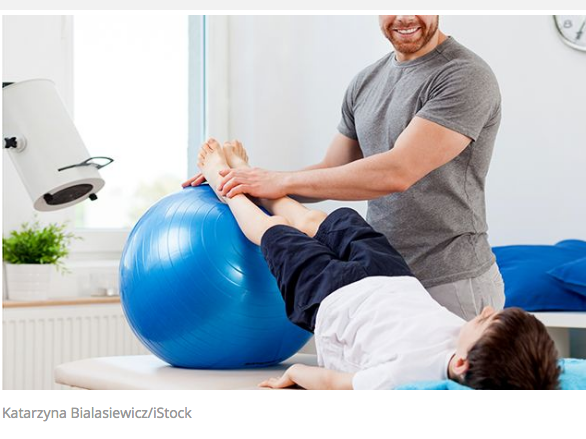When I was growing up in the late seventies and early eighties I wanted to be Wonder Woman with her awesome strength, invisible plane (I used to make believe my big wheel was my invisible plane), and her smarts. I know many little girls who wanted to be just as strong as Wonder Woman and I was one of them. Wonder Woman was an amazon woman who worked her muscles in training constantly and she had to use not only her brain but her muscles in her body to achieve her heroic antics.
Now that I am grown up, I realize that her true strength was using her muscles when she wielded her lasso and running and jumping. If you step back and take a long hard look at the beginning of her journey of Wonder Woman you will see that she worked out, she exercised, she trained her muscles to get them to be strong and flexible just like how we want our muscles to be. When you live a lifestyle of inactivity or have an illness that wastes your muscles in your body you realize this fact.
Muscle Atrophy is the wasting (thinning) or loss of muscles in the tissues. You lose mobility and flexibility when this happens.
There are three types of muscle loss:
- Physiologic: This is not using your muscles enough. This can be reversed with exercise. If you sit all day and not get up and move your body or are bedridden or can’t move your limbs because of a stroke or another illness then this is the type of atrophy you have.
- Pathologic: You get this when you age. As we age we lose muscle mass that is why strength training is vital for everyone to do including women. You can also get this if you are starving or have a disease like Cushing Disease.
- Neurogenic: This is the severest of all muscle atrophy. You can get this from a brain injury or any injury. You can also get this with spinal cord injuries, Spinal muscular atrophy, carpal tunnel syndrome, Guillane Barre Syndrome, Diabetes, Polio, Burns, Corticosteroid therapy, malnutrition, muscular dystrophy, osteoarthritis, rheumatoid arthritis.
If you think you are experiencing muscular atrophy it is important to go to the doctor right away.
The Symptoms of Muscular Atrophy are:
- One arm or leg is noticeably smaller than the other.
- You experience weakness in one limb or more
- You have been physically inactive for a long period of time
Your doctor will be running these types of tests:
- Blood tests
- X ray
- MRI
- CT scan
- Nerve conduction study
- Muscular nerve biopsy
- Electromyography
There is treatment for muscular issues. If you have a chronic illness, that won’t be cured, it may not stop the muscles from getting weak but it can reduce the time it takes to become weaker.
Treatments for Muscular Atrophy Include:
- Exercises
- Physical Therapy
- Ultrasound therapy
- Surgery
- Dietary changes
I have several diagnosis’ in my life that play a role in me losing muscle mass. I have three autoimmune diseases that work against me. I also take several chemo drugs that cause me to lose muscle too. That being said, I know the importance of moving my muscles.
I also understand the mindset of, “Why bother?”
- Because exercise is not going to cure my ailments
- Because eating well won’t cure me either
“Why bother?” is victim thinking. I have thought these thoughts. I fight myself constantly to think beyond the victim role. I know that if I want to be like Wonder Woman, a warrior, fighter, and strong then I have to get the mind monsters out of my head. I still fight these monsters. I think we all do.
Your thoughts may be different than mine. I do believe that we all share the most important goal that we will achieve in our lives, and that is living well despite the many challenges we face daily including our illnesses, divorce, broken relationships, and people that judge and condemn us. Finding our value and finding our mental and physical strength can help us find our value. I feel the first defense we need is getting our mind healthy and strong so we can then go on and build our muscles. We do this by eating well and moving our butts.
Eating well for those of us with illnesses, that take away muscle mass, is by eating an adequate amount of protein. Protein is an important nutrient that builds muscle. Eating 2 grams of protein for every four pounds we weigh is the amount we should be eating. For me, that is 80 grams. That is a lot. I know I don’t eat that amount of protein every day, but that is what I aim to eat daily. There are three macronutrients we need daily in order to build strong muscles, they are proteins, fats, and carbohydrates.
There are two types of exercises we should focus on while building our muscles they are range of motion exercises and flexibility exercises.
Karen talks about range of motion exercises in her video Moving with Juvenile Arthritis. Check out WWNW’s YouTube channel to watch all of her uplifting and encouraging videos and be sure to subscribe to WWNW’s YouTube channel.
If you need help in discovering how to get enough macronutrients and micronutrients in your meals Karen and the Wellness Works NW Team will be happy to assist you in meal planning and meeting your wellness goals.
Let’s work our muscles!
Here are some links I would like to share with you:
- Exercise and Spinal Muscular Atrophy by Spinal Muscular Atrophy UK Staff
- What’s the Difference Between Micronutrients and Macronutrients by Rachal Nall, MSN, CRNA and medically reviewed by Miho Hatanaka, RDN, LD for Health Line
- Muscle atrophy by Medline Plus Staff
- Image Credit: Muscular Atrophy by Katherine Lee and medically reviewed by Samuel Mackenzie, MD, PhD for Everyday Health
- Nutritional strategies to counteract muscle atrophy caused by disuse and to improve recovery by Hugues Magne, Isabelle Savary-Auzeloux, Didier Rémond, Dominique Dardevet for National Library of Medicine
- Nutrition Suggestions for Spinal Muscular Atrophy by NCHPAD Staff
- Physical exercise training for type 3 spinal muscular atrophy by Bart Bartels, Jacqueline Montes, W. Ludo van der Pol and Janke F. de Groot for Cochrane Library
- Skeletal Muscle Disuse Atrophy and the Rehabilitative Rose of Protein in Recovery from Musculoskeletal Injury by Emily E Howard, Stefan M Pasiakos, Maya A Fussell and Nancy R Rodriguez for Oxford Academic
- Spinal Muscular Atrophy by Muscular Dystrophy Association Staff
- Spinal Muscular Atrophy by WebMD Staff
- What Causes Muscle Wasting? by Ann Pietrangelo and medically reviewed by Elaine K. Luo, MD for Health Line
Related Articles
 Jamie Holloway is a co-owner of Wellness Works NW and she is also our Research Manager and writes our Chasing Wellness with Jamie Holloway and Dear Jamie columns. Jamie is also an Independent Wellness Advocate at dōTERRA. She lives in the Portland, Oregon area. Since October 2011 she has been sharing her Journey Toward Health and Wellness with Vasculitis through her blog at JamieChasesButterflies.com. We hope you are as inspired as we are with the raw candor Jamie uses in her writing. If you would like to help support Jamie’s writing efforts please Donate now.
Jamie Holloway is a co-owner of Wellness Works NW and she is also our Research Manager and writes our Chasing Wellness with Jamie Holloway and Dear Jamie columns. Jamie is also an Independent Wellness Advocate at dōTERRA. She lives in the Portland, Oregon area. Since October 2011 she has been sharing her Journey Toward Health and Wellness with Vasculitis through her blog at JamieChasesButterflies.com. We hope you are as inspired as we are with the raw candor Jamie uses in her writing. If you would like to help support Jamie’s writing efforts please Donate now.













